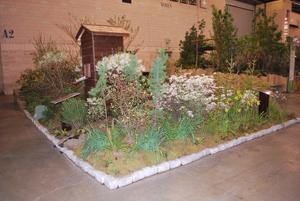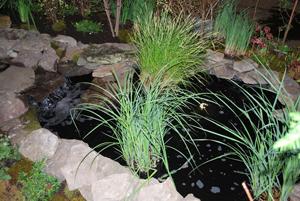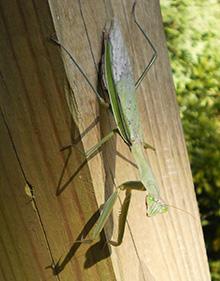Philadelphia Flower Show
EPA's 2016 Exhibit
EPA's exhibit, "Preservation and Protection: Saving America's Natural Heritage." was at the 2016 Philadelphia Flower Show Exit from March 5 to March 13. The Flower Show is held every Spring in the Pennsylvania Convention Center Exit . This year the Flower Show celebrated America's National Parks.
Visitors viewed native wetlands flora from the northeastern United States. Plants on display included pitcher plants, blueberries, larch, dogwood, rhododendra and azaleas. The exhibit also included educational information on aquatic ecosystems, native plants and their preservation and protection.  EPA’s exhibit at the 2016 show, "Preservation and Protection: Saving America's Natural Heritage"
EPA’s exhibit at the 2016 show, "Preservation and Protection: Saving America's Natural Heritage"
This year's exhibit was recognized with three prestigious awards:
- Gold Medal Award by the Pennsylvania Horticultural Society for the use of Gold Medal plants in a major exhibit.
- Alfred M. Campbell Memorial Trophy for a major educational exhibit that demonstrates the most successful use of a variety of plants in a unique fashion.
- Garden Club Federation of Pennsylvania's Special Achievement Award recognizing the variety of native plants displayed, their unique use, and unusual excellence.
Native Plants
EPA's exhibit highlighted the use of native plants to create a low-impact  A water feature and plants at the 2016 EPA exhibit.landscape and protect watersheds. Environmental benefits of using native plants extend to other areas that visitors may not have considered:
A water feature and plants at the 2016 EPA exhibit.landscape and protect watersheds. Environmental benefits of using native plants extend to other areas that visitors may not have considered:
- discouraging insect pests
- conserving water resources
- protecting endangered plants
- attracting beneficial insects
- conserving water and improving water quality
- reducing the use of pesticides
Using native plants in gardens may also save time and money otherwise spent on fertilizer, water and pesticides to grow non-native plants.
Examples of native plants in the exhibit that attract beneficial insects include: A large praying mantis - a beneficial insect - on a wood post in a garden
A large praying mantis - a beneficial insect - on a wood post in a garden
- Blueberry - attracts bumblebee pollinators
- Hackberry - host plant for the Hackberry butterfly, Eastern Comma, Mourning Cloak and Tawny Emperor
- Spicebush - host plant for the Spicebush Swallowtail and Promethean Moth
- New Jersey Tea - host plant for the Spring Azure butterfly
The use of native plants is part of a set of practices called integrated pest management, which is a common-sense way of managing pests through biological, cultural, physical, and chemical tools that minimize risks to people and the environment.
In other words, start with prevention; if a pest or weed problem develops, use an integrated approach to solve the problem. Learn more about Integrated Pest Management (IPM) Principles.
